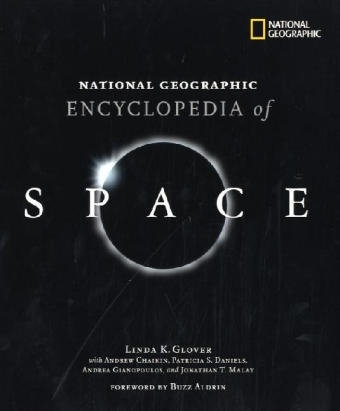
"National Geographic" Encyclopedia of Space
Seiten
2004
National Geographic Books (Verlag)
978-0-7922-7319-6 (ISBN)
National Geographic Books (Verlag)
978-0-7922-7319-6 (ISBN)
- Keine Verlagsinformationen verfügbar
- Artikel merken
Answers to questions about space and space travel are provided in an accessible and fact-filled reference that encompasses explanations of all aspects of space, including planets, telescopes, the origins of the universe, and discoveries made by Nicolaus Copernicus, Edwin Hubble, and Stephen Hawking
The National Geographic Encyclopedia of Space offers clear and concise explanations of the planets; telescopes; manned space flight; satellites; the origin of the universe; the contributions of Nicolaus Copernicus, Edwin Hubble, and Stephen Hawking; and much more. The Encyclopedia of Space answers such questions as How vast is the Milky Way? What makes a satellite stay up? How does deep space affect our daily climate? Arranged in six thematic chapters, the Encyclopedia of Space brings together in one accessible volume the varied aspects of space science: the solar system, deep space exploration (manned and unmanned) and discovery, satellites and orbits, and the commercial, scientific, and military uses of space. Tables, diagrams, maps, and fact boxes provide additional information and value. The encyclopedia is enriched by recently declassified intelligence material and photographs from the U.S. Navy and the National Reconnaissance Office, the latest Hubble images, and essays written by leading professionals in the field, such as Kathryn Sullivan and Sylvia Earle. Astronaut Buzz Aldrin, who landed on the Moon with Neil Armstrong, will write a foreword to the encyclopedia.
The National Geographic Encyclopedia of Space offers clear and concise explanations of the planets; telescopes; manned space flight; satellites; the origin of the universe; the contributions of Nicolaus Copernicus, Edwin Hubble, and Stephen Hawking; and much more. The Encyclopedia of Space answers such questions as How vast is the Milky Way? What makes a satellite stay up? How does deep space affect our daily climate? Arranged in six thematic chapters, the Encyclopedia of Space brings together in one accessible volume the varied aspects of space science: the solar system, deep space exploration (manned and unmanned) and discovery, satellites and orbits, and the commercial, scientific, and military uses of space. Tables, diagrams, maps, and fact boxes provide additional information and value. The encyclopedia is enriched by recently declassified intelligence material and photographs from the U.S. Navy and the National Reconnaissance Office, the latest Hubble images, and essays written by leading professionals in the field, such as Kathryn Sullivan and Sylvia Earle. Astronaut Buzz Aldrin, who landed on the Moon with Neil Armstrong, will write a foreword to the encyclopedia.
| Erscheint lt. Verlag | 26.11.2004 |
|---|---|
| Zusatzinfo | colour maps, 175photos |
| Verlagsort | Washington |
| Sprache | englisch |
| Maße | 243 x 286 mm |
| Gewicht | 1822 g |
| Themenwelt | Sachbuch/Ratgeber ► Natur / Technik ► Weltraum / Astronomie |
| Schulbuch / Wörterbuch ► Lexikon / Chroniken | |
| Naturwissenschaften ► Physik / Astronomie ► Astronomie / Astrophysik | |
| ISBN-10 | 0-7922-7319-2 / 0792273192 |
| ISBN-13 | 978-0-7922-7319-6 / 9780792273196 |
| Zustand | Neuware |
| Haben Sie eine Frage zum Produkt? |
Mehr entdecken
aus dem Bereich
aus dem Bereich
die Suche nach der Urkraft des Universums
Buch | Hardcover (2023)
Klett-Cotta (Verlag)
CHF 34,95
Perspektiven auf die Menschheit
Buch | Hardcover (2024)
Klett-Cotta (Verlag)
CHF 34,95


